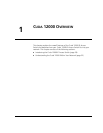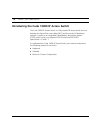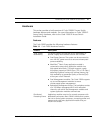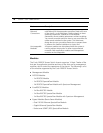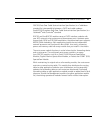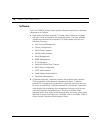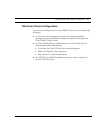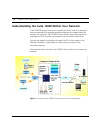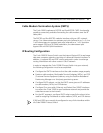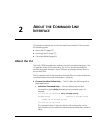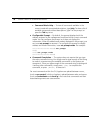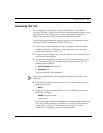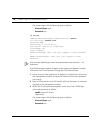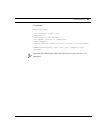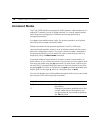
Cuda 12000 IP Access Switch CLI-based Administration Guide
Understanding the Cuda 12000 Within Your Network 33
Cable Modem Termination System (CMTS)
The Cuda 12000 implements DOCSIS and EuroDOCSIS CMTS functionality,
providing connectivity and data forwarding for cable modems over the RF
cable plant.
The DOCSIS and EuroDOCSIS modules interface with your HFC network,
using a 1-to-4 downstream-to-upstream port ratio (referred to as 1 x 4), or a
1-to-6 downstream-to-upstream port ratio (referred to as 1 x 6). Upstream
ports support QPSK and 16 QAM modulation; the downstream port
supports 64 and 256 QAM modulation.
IP Routing Configuration
The Cuda 12000 IP Access Switch uses the Internet Protocol (IP) to exchange
data over computer networks consisting of cable and Ethernet interfaces. In
addition, it supports RIP and OSPF routing protocols in order to exchange
routing information with other routers in the IP network.
In order to integrate the Cuda 12000 IP Access Switch into your network,
the following configuration must be accomplished:
■ Configure the CMTS interfaces so that the cable modems range properly.
■ Provision cable modems, Multimedia Terminal Adapters (MTAs), and CPE
(Customer Premise Equipment) devices, using the FastFlow Broadband
Provisioning Manager or a third-party provisioning server.
■ Configure DHCP subnets, so that the DHCP server gives out IP addresses
to cable modems, MTAs, and CPE devices.
■ Configure IP on your cable, Ethernet, and Packet Over SONET interfaces
to connect the Cuda 12000 to your backbone network and provide the
subscribers access to the Internet.
■ For the HFC segments, configure DHCP relay to specify the subnet to be
used for assigning IP addresses to cable modems, MTAs, and CPE devices.
IP, RIP and OSPF can currently be configured on any of the interfaces within
the Cuda12000 IP Access Switch.



